The Graphic Novel: 5 Titles Worth Your Time
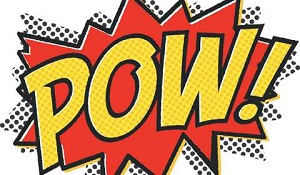
So, what exactly is a graphic novel? The term is a nomenclature that became popular in the 1970s. The term actually first appeared in the 1960s, but Will Eisner’s 1978 A Contract with God launched the term into popularity. Famous comic writer Alan Moore once joked that “graphic novel” was just a marketing term for “expensive comic book”. Author Neil Gaiman has commented that he takes the term as a compliment, but he feels it is used sometimes to show that we can “deal with something good being done as a comic book”. While there is much debate over the exact definition of the term, it is generally thought of as a group of comic books that tell a continuous story. So instead of reading a single comic book that has a beginning, middle, and end, a graphic novel will link several comics together (usually in one large bound work) to tell an extended story. Most of them do begin life as individually published comics later brought together in large published work. While many graphic novels do emphasis the term “graphic” in their content, there are many great works available for all ages.
Graphic novels are one of the frequently ignored children of literary genres, but they have so much to offer in story and characters. Keep in mind that graphic novels always have two authors: the writer and the illustrator. The artwork always tells just as much of the story in this amazing literary form. If you have ever been curious about them or if your curiosity is now piqued, here is a list of five of the best graphic novels to start with.
5. Runaways, Vol 1: Pride and Joy (Brian K. Vaughan, Illustrator – Adrian Alphona, 2006)
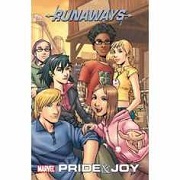 During an annual get-together, six teenagers secretly witness their parents murder an innocent girl. As they begin to investigate, they discover many secrets hidden within their own homes. They begin to suspect that their parents may be evil supervillians, and they are being raised as the next generation of a group called The Pride. The police and government officials are also involved, so their only choice is to run away. Uncovering their own super abilities and the truth behind their origins, each must decide if they are willing to betray their inheritance for the greater good.
During an annual get-together, six teenagers secretly witness their parents murder an innocent girl. As they begin to investigate, they discover many secrets hidden within their own homes. They begin to suspect that their parents may be evil supervillians, and they are being raised as the next generation of a group called The Pride. The police and government officials are also involved, so their only choice is to run away. Uncovering their own super abilities and the truth behind their origins, each must decide if they are willing to betray their inheritance for the greater good.
This story is definitely one of the less “graphic” of the graphic novels. It is a fun read. The artwork is in color, and kind of reminds me of a Saturday morning cartoon (but in a good way). The colorful panels correlate with the quick, Whedon-like dialogue and fast paced action. It may not lead you into a great intellectual discussion, but the great characters carry the story. While many of the main characters are typical teenage archetypes (Alex, the shy computer geek, Gertrude, the brainy nerd, Karolina, the pretty, flaky, vegan, Victor, the jock, Nico, the goth girl, and Molly, the overly naïve), they show great character development through the story. It is like a modern version of The Breakfast Club with amazing artwork, funny dialogue, secret hideouts, superpowers, and even dinosaurs.
4. The Walking Dead, Vol. 1: Days Gone Bye (Robert Kirkman, Illustrator – Tony Moore, 2004)
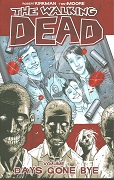 You can barely have a conversation or read the news today without someone mentioning The Walking Dead. But like most great television and films, this show has its origin in the published word. The premise of the story is familiar to any one who has every seen a zombie film: the world has been overrun with the undead, and the living must fight for survival. The story focuses on Rick, a former police officer who wakes up from a coma after the zombie apocalypse has started. He is thrown naïvely into the new world in search of his missing wife and son. So far into the series, the focus has stayed in Georgia and on the survivors Rick comes across.
You can barely have a conversation or read the news today without someone mentioning The Walking Dead. But like most great television and films, this show has its origin in the published word. The premise of the story is familiar to any one who has every seen a zombie film: the world has been overrun with the undead, and the living must fight for survival. The story focuses on Rick, a former police officer who wakes up from a coma after the zombie apocalypse has started. He is thrown naïvely into the new world in search of his missing wife and son. So far into the series, the focus has stayed in Georgia and on the survivors Rick comes across.
The artwork is black and white, but don’t let that deter you. The bleak coloring adds to the interminable despair the characters continually face. The coloring also cuts down on the spray of violence so as not to take too much away from the story. But never fear if you are looking for violence, there is plenty to go around. If you thought the television show went too far with some of the horrible things people can do to each other, the comic goes much further. The character of the Governor in particular is even more sadistic and cunning. But any violence is always overshadowed by character who are seeking faith and the will to survive in a new world that seems hopeless. If you are a fan of the show, don’t worry too much about spoilers. While Kirkman’s Walking Dead holds many similarities to the show, the characters face some different obstacles and not always the same death sentences.
3. Watchmen (Alan Moore, Illustrator – Dave Gibbons, 1987)
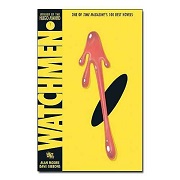 Like The Walking Dead, don’t be put off if you have seen the 2009 film version of Watchmen. Most readers agree that the graphic novel is far superior. (Isn’t the book always better?) Alan Moore is one of the most acclaimed comic writers of all time. He is also the author of V for Vendetta, From Hell, League of Extraordinary Gentlemen, and several Batman graphic novels. He brings depth to his characters, particularly superheroes, by revealing their dark sides under the colorful costumes.
Like The Walking Dead, don’t be put off if you have seen the 2009 film version of Watchmen. Most readers agree that the graphic novel is far superior. (Isn’t the book always better?) Alan Moore is one of the most acclaimed comic writers of all time. He is also the author of V for Vendetta, From Hell, League of Extraordinary Gentlemen, and several Batman graphic novels. He brings depth to his characters, particularly superheroes, by revealing their dark sides under the colorful costumes.
Watchmen deals with an alternate 1980s New York City where superheroes exist. These are not your parents superheroes. They deals with issues of sexual assault, pedophiles, government conspiracies, vigilantism, and old age. The background is set against a Cold War-like situation of a portentous nuclear war between America and the Soviet Union. There are other real historical events present which are changed due to the presence of superheroes in this world, such as different outcomes for the Vietnam War and Richard Nixon’s presidency. Most superheroes have gone into retirement after the Keene Act is passed outlawing them. The story begin with the death of Edward Blake, a.k.a The Comedian, who has continued his costumed persona under a contract with the government. Rorschach, a costumed vigilante, investigates Blake’s death, believing there is a conspiracy to eliminate former heroes. Rorschach sets out to warn other retired costumes, Doctor Manhattan (who is also employed by the government), Laurie Juspeczyk (the second Silk Sprectre after her mother), Adrian Veidt (Ozymandias), and Dan Dreiberg (the second Night Owl). The subject matter is very dark and mature against the colorfully drawn characters and panels. As the heroes deal with their own mortality, they find that someone may be trying to terminate their existence, and Moore asks the famous question of “Who watches the Watchmen?”
It’s an interesting concept to see what life is like for superheroes once they grow old. It goes along with the saying of “never meet your heroes”. Outside the spotlight, these heroes drink, have affairs, and do other things that normal people do. Alan Moore tends to show the dark side of the super life and that all heroes are really anti-heroes underneath their costumes. They have flaws, but are judged heavily for mistakes that could take away from their “good guy” stature. It could be seen as a reflection on how society treats the celebrity statue–nothing in your life is allowed to be private and every flaw will be scrutinized. If we accept our heroes’ flaws, then we eliminate the false perfection we feel we have to live up to.
2. Maus (Art Spiegelman, 1986)
 Cartoonist Spiegelman uses the graphic novel format to tell the true story of his father, Vladek Spiegelman, surviving Nazi occupied Poland and Auschwitz. The story is told in a cartoon format with different animals representing different groups of people: mice represent the Jews, cats the Nazis, and other non-Jewish characters are pigs. It begins in 1978 with Art visiting his father to interview him about his past experiences. He tells the story in a nonlinear format, going from his present time of speaking with his father to back to his father’s childhood.
Cartoonist Spiegelman uses the graphic novel format to tell the true story of his father, Vladek Spiegelman, surviving Nazi occupied Poland and Auschwitz. The story is told in a cartoon format with different animals representing different groups of people: mice represent the Jews, cats the Nazis, and other non-Jewish characters are pigs. It begins in 1978 with Art visiting his father to interview him about his past experiences. He tells the story in a nonlinear format, going from his present time of speaking with his father to back to his father’s childhood.
While it is drawn with cartoon-like animal characters, this story is not a children’s tale. The story of survival is filled with the horrors of war and concentration camps. The black and white drawings emphasize the grim tale and allow it to seem more historical than it might have been in bold colors. The animal characters add to the story by showing the cat-Nazis as predators to the mouse-Jews as prey. The pigs as other non-Jew, non-Nazi characters do not seem intended to be offensive but to show others as an ambivalent characters who do not generally fit into the predator/prey category.
The story is ultimately about a father trying to share the past with his son, who initially sees it as story to sell. Art struggles to understand his father’s past detachment from his family and his severe stubbornness to change–the very traits that helped Vladek survive the camps. As Vladek tells his story, his icy demeanor chips away. While Art can never fully understand what his father went through, Maus reads as a dedication to a father’s survival and forgiveness from a misjudging son. Maus is not only a visual masterpiece, but a phenomenal literary work that breaks any graphic novel stereotype. It is, deservingly so, the first graphic novel to win a Pulitzer Prize.
1. The Sandman, Vol. 1: Preludes and Nocturnes (Neil Gaiman, Illustrators – Sam Kieth, Mike Dringenberg, and Malcolm Jones III, 1988)
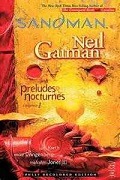 One of the few graphic novels to ever make the New York Times Best Seller list along with Maus and Watchmen, The Sandman is a must read for anyone interested in comics, fantasy, mythology, or a visual odyssey. It is a collection of stories that requires several readings to fully appreciate the creative writing skill that went in to creating an unforgettable graphic novel.
One of the few graphic novels to ever make the New York Times Best Seller list along with Maus and Watchmen, The Sandman is a must read for anyone interested in comics, fantasy, mythology, or a visual odyssey. It is a collection of stories that requires several readings to fully appreciate the creative writing skill that went in to creating an unforgettable graphic novel.
The title character of The Sandman is actually Dream, the lord of dreams, also called Morpheus, who is the personifications of dreams. The story begins with a magician and his cult trying to call upon Death but inadvertently capturing Dream and trapping him for 70 years. During this time, the world of dreams begins to break down, and some people are trapped in a dreamlike state until Dream finally breaks free. He sets out to take revenge upon his captors and to find his three totems of power (a ruby, a helm, and a bag of sand). He must recover these objects to set rebuild his dilapidated kingdom and restore the world of dreams to right.
The complete story of Sandman is difficult to explain. It has stories within stories within stories, but they all tie together by the character of Dream, even if he is not in the story. Some of the stories are about Dream’s family, including Death, Despair, and Desire. The character of Death, in particular, is unique in appearance and demeanor; I can’t say much more without giving away a surprise element surrounding the character. There is even a story revolving around cats and how they once ruled the world. Some of the stories seem bizarre but are so engrossing that you do not question the significance of how they will fit in later on. Most of the stories are not for the faint of heart. They deal with issues of rape, murder, dismemberment, serial killers, and many other serious but fantastically dealt with controversies. Like The Walking Dead, the panels are black and white and do tone down the gore but little is left to the imagination when it comes to the violence.
If the idea of graphic violence turns you off from Sandman, try to think of it as an adult fairy tale instead. There are morals and lessons here to be learned. The immoral do not go unpunished. The themes and mythological allusions are endless in this series. There is something for everyone to relate to among the story and characters. For comic connoisseurs, Gaiman uses his expansive knowledge of comic book characters and includes numerous references throughout. Although the story is told in black and white, the witty dialogue and superb storytelling lend readers colorful descriptions enough to satisfy the most skeptical of the graphic novel genre. It is a reading experience that will leave you breathless and, hopefully, reaching for more graphic novels in the future.
Further Reading
There is still much awareness that needs to be raised to have graphic novels placed in the same literary canon as other great literary works of the last few decades. They have great value in reaching the most reluctant reader and should be praised for the time and effort that goes into developing a written story accompanied by a visual one. The above graphic novels are just a few of the widely growing genre. There is something for everyone with categories spanning across all genres: children’s, romance, horror, science fiction, fantasy, westerns, and history. If none of the above appeal to you, here are few others that are considered top-notch:
V for Vendetta (Alan Moore, 1982)
Persepolis (Marjane Satrapi, 2000)
Batman: The Dark Knight Returns (Frank Miller, 1986)
Y: The Last Man (Brian K. Vaughan, 2003)
Fables (Bill Willingham, 2002)
Bone (Jeff Smith, 1991)
Scott Pilgrim (Bryan Lee O’Malley, 2004)
Sin City (Frank Miller, 1991)
Blankets (Craig Thompson, 2003)
Ghost World (Daniel Clowes, 1998)
What do you think? Leave a comment.
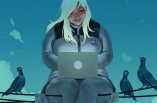
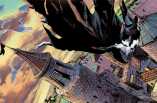
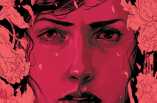
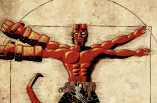
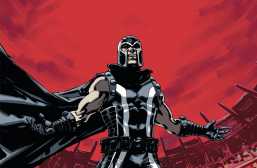
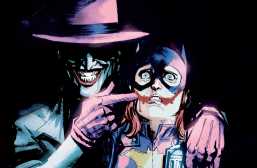
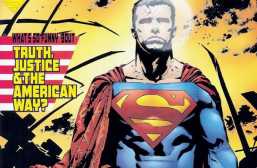
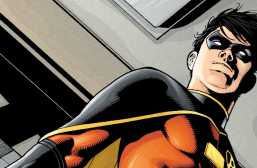
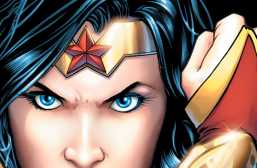
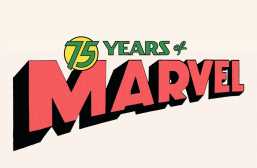
I’d throw in a shout for John Allison’s first Bad Machinery book ‘The Case of the Team Spirit’. He’s one of the best comics writers around and his evocation of Secondary school is perfect. The characters and dialogue are brilliant and the plot is a nice take on the Famous Five style YA mystery stories.
One of the best graphic novels I read this year was another edition of Darwyn Cooke’s continually brilliant adaptations of Richard Stark’s Parker – this time, ‘The Score’. They’re just perfect books.
Great list. I’m personally a big fan of Glyn Dillon’s Nao of Brown. The only additions I think I would make are the psychedelic masterpiece The Frank Book by Jim Woodring, anything by the Norweigan comic creator Jason, and Forming by Jesse Moynihan, published by Nobrow – one of the funniest comics i’ve read.
Alan Moore’s The Killing Joke is by far better than anything on this list, as is his work on Swamp Thing.
V for Vendetta was utterly unlikeable for me as much as I tried to get into the graphic novel version. Filled with socialist crap ideology plugged in at random with no understanding of the concepts the writer was trying to discuss and speak to in a meaningful way.
The best thing about the graphic novel is sadly the cover artwork. And that’s by a long shot. Nothing within the pages mirrors the quality of the cover. The movie creators filtered out a lot of the crap from this book for good reason.
Yes, V for Vendetta is not for everyone. It’s one of Alan Moore’s more political writings. It does have some great historical tie-ins, though.
I agree Alan Moore is master of the graphic novel. My list was meant to be a starting point for those intimidated by the term “graphic novel”.
It is a true shame that Julie Wertz’s “The Infinite Wait” didn’t even get a honourable mention. Easily one of the best graphic novels of the past five years.
That’s a great one. Thanks for the suggestion.
A very good list with most of my favourites on it, and one I’d be generally happy to give to anyone interested in graphic novels. The one glaring omission for me would be Raymond Briggs’ Ethel & Ernest. Not only is it a classic, it’s a title that’s a perfect introduction to graphic novels for the uninitiated.
I have not read it yet. Thanks for mentioning it. I try to get through them as fast as I can. There are so many great ones available today.
Runaways was amazing, the twist at the end of the first volume was great.
Runaways is one of my favorites in recent years. With most graphic novels being so dark in subject matter, Runaways is a nice fun change with a great story.
Neil Gaiman and Alan Moore are two of my favorite names in the world graphic novels. I’ve read Watchmen three times–once in high school, then again for a literature class in college a couple of years ago, and most recently, last summer. It’s true what they say–every time you re-read a book, you gain something new from it. Although, I didn’t dislike the film, but I agree with you in that the graphic novel is far more superior. One thing I noticed during a re-read was Andrew Veidt’s desperation (might be a strong word) to be considered as powerful or influential as Dr. Manhattan. In my opinion, Veidt’s motivation for his plan lies in his envy for Manhattan’s abilities. Veidt is considered the smartest person on the planet, but what is he compared to Dr. Manhattan, who is virtually a god?
Good analysis. Yes, even though Viedt has so much going for him, it is not enough.
This is a good list. (I find ‘Maus’ to be one of the best pieces of literature, graphic or otherwise.) One of my favorites is the graphic novel that was developed from the TV series ‘Jericho.’ The show itself is absolutely amazing, but when it was cancelled after a limited season 2, “season 3” was a graphic novel. It’s a bit of an unconventional choice, but it pairs well with the series as it continues the story in a worthy manner. Definitely a worthwhile read … after wallowing in the gloriousness that is the TV show, of course!
Thanks for sharing the information! I had no idea Jericho had a literary adaptation. I will definitely check it out; I miss the series.
I taught Maus in a seminar on literature of war. Students has apparently thought that the graphic novel format meant a lighter treatment. There was widespread ‘say what???’ as they got in to the novel. Like you, Robert, I think it’s a masterpiece in any genre.
Thanks for the list, many here I have not read. I would suggest Craig Thompson’s “Habibi”. It’s a remarkable book, both the story and the Arabic-inspired artwork.
Beautifully done, in a way, but it’s a shame about all the sexism and Orientalism. Which, in fact, makes me not recommend it, at all.
sunday-guardian.com/artbeat/the-earnest-orientalist
This is a beautiful list; I wholeheartedly agree with half of them and should go read the other half. In the meantime, I also recommend Locke and Key. It’s not the deepest story you’ll read, but the way that the author and illustrator play with the art and experiment with the panels is great for modern graphic novels. Also, if anyone doesn’t know how to read graphic novels effectively, just spend a weekend devouring Scott McCloud’s work. (I promise, it will only take a weekend.) He’s really opened a door into analysis of comics.
I have been intrigued by Locke and Key but wary since Joe Hill is writing. I like odd, but I’ve read a few of his books, and he’s a little too odd sometimes for me.
I agree about McCloud. His “Understanding Comics” is a must-read for those who have never sat down with a comic or graphic novel before and want to read effectively.
Great one. I teach college Composition and I sometimes use Understanding Comics to help my students understand “visual writing”. Wish I could teach a class on graphic novels!
A wonderful list. David Lapham’s Stray Bulletts is an absent favorite.
I have only read Watchmen from that list (as well as V For Vendetta and Scott Pilgrim from the sublist), but Watchmen is phenomenal. It changed life for me. To anyone reading this comment: if you haven’t read Watchmen, you should, it is fantastically written, and fantastically illustrated. DO NOT watch the movie. I watched the movie after reading the book, and found that the movie was a horrible adaptation. They failed to recognize some of the key elements from the book.
As for the other graphic novels mentioned, the one that seems most interesting to me is Sandman, as I am currently trying to piece together and write a nexus of stories from my own dream land myself. I might just have to go to the local B&N and pick up a copy!
I just discovered Sandman this past year, and it is definitely one of my favorites! It is full of some much great imagery.
I agree with the choices you made on your list, though I haven’t read any of them. But with your great desriptions, it makes me want to read them! 🙂
Watchmen is my favourite graphic novel but the film is also very good. I think I accepted beforehand that they would never be able to translate a lot of it on-screen but it is surprisingly good, in my opinion (despite the miscasting of Matthew Goode and changed ending).
I actually saw the movie before reading the novel, so, from an unbiased prospective, I enjoyed the movie.
I’m a tad iffy with Runaways due to its hiatus/abandonment. I did wish it continued.
I know what I’ll be doing this weekend, thanks for that!
If you’re not intimidated by graphic novels, I’d recommend Alan Moore’s “From Hell.” If you can get past the scratchy illustrations its a very deep novel.
“From Hell” is great, too. Maybe not for a first time graphic novel reader, but anything by Alan Moore is always well written and deep in theme.
So glad that Maus is on here! I also recently bought Scott McCloud’s book, “Understanding Comics,” which I highly recommend for the further reading section. It’s in comic form, and while it’s not a graphic novel, it takes an amazingly deep look at the medium, and at representational art as a whole.
I know he probably doesn’t *really* count, as most of his work is very short, but Edward Gorey is one of my all-time favorite writer/illustrators.
I would add to your reading list Superman: Red Son as a good foil to some of the more traditional graphic novels.
DC’s Elseworlds line of stories had some questionable runs but they hit it right on with Superman: Red Son.
What, no Fun Home, by Alison Bechdel? Unless I missed it…gotta be there!
That’s a great one. I was trying to just give a brief variety to choose from, but I definitely should have put more memoir / biographical types on the list.
This was so informative. I’ve been wanting to get into graphic novels for some time now. There are so many to choose from, the number of routes to choose became a bit daunting for me. Your well-worded guide left me feeling much more educated on not only the great titles out there, but why they were great. And which one may be right for me. I did notice a few typos here and there. But as a fellow writer, I understand how some can slip right by you. In fact, I wouldn’t doubt that this comment even has a few strewn about. Regardless, I loved this piece and I will be picking up a copy of Sandman soon. Thank you.
Great list! One title that I always recommend to people is the Preacher series. It’s an epic modern day western where the main character, Jessie Custer, is on a mission to hunt down God and hold him responsible for abandoning humanity. Throughout the story you meet vampires, cults and tons of other strange characters. It’s definitely one of the most unique stories I’ve ever read.
One of my personal favorite graphic novels is “Punk Rock Jesus” by Sean Murphy. It provides biting social commentary of religion and the media-saturated public, and the reverence of celebrity over faith. I wrote a paper on it for one of my College classes, and my teacher actually read the novel after grading my paper.
I especially like that these are all self-contained, so a huge amount of background knowledge isn’t required as it would be for someone looking to get into more conventional serial comics.
I enjoyed “Preacher” by Garth Ennis. Though, I’ve only read the first three books.
My introduction to “The Watchmen” was an awakening; it was the moment that I became cognizant of the existence of an underground. In this case, it was the underground or, if you will, a ‘black market’ for comics. The topics explored in the graphic novel were certainly more adult than I had read up to that point (I read it the year it was released, 1987). But it was more than the thematic sinew…it was the realization that comics and on a larger scale, film , TV and literature could be produced outside of the influence of the major major players (Marvel and DC). So when I realized what had been introduce I began searching for others in different genres…Thank you “Watchmen” for opening my eyes!
love when runaways gets a nod
Yes, it’s one of my new favorites. Haven’t read very far in, but love it so far.
Liz, I really enjoy reading your articles. I’m pretty green in my knowledge of graphic novels, having only read a few of the more famous ones (Watchmen, Persopolis, Maus, The Dark Knight Returns), so I thank you for more titles I can track down.
I just read the first volume of Gaiman’s Sandman yesterday and was really intrigued by the mix of mythology, fantasy, horror, and cultural history. I might be the only person in the world who was not blown away by American Gods, so I’m even more impressed with Gaiman’s work here. And the visuals are often amazing.
Thanks again for a great article and a great list!
Great Article! I like the top four, but I think there are more relevent graphic novels to take that fifth spot, such as Persepoilis.
This was great. I really liked how you pulled comics from different times and that have very different tones. There are so many fantastic comics out in the world that I feel like pivking a top list would be nearly impossible, but you have pulled off a very nice list.
You listed some great works here. I appreciate you listing Bone. As a former middle school teacher, I found this graphic novel as a great tool for engaging students in the reading process. Though personally, I would have chosen “Y-The Last Man” over “Runaways,” as part of my top 5, listing Brian K. Vaughan work period, is without a doubt a wise choice. His style of writing, especially dialogue is gripping. Good analysis of these works!
Kudos for placing Maus on the list. It was my first graphic novel and more engaging than I gave it credit for. Also, have you checked out the graphic novel version of Coraline, or the similar versions of popular adolescent series such as The Babysitters’ Club?